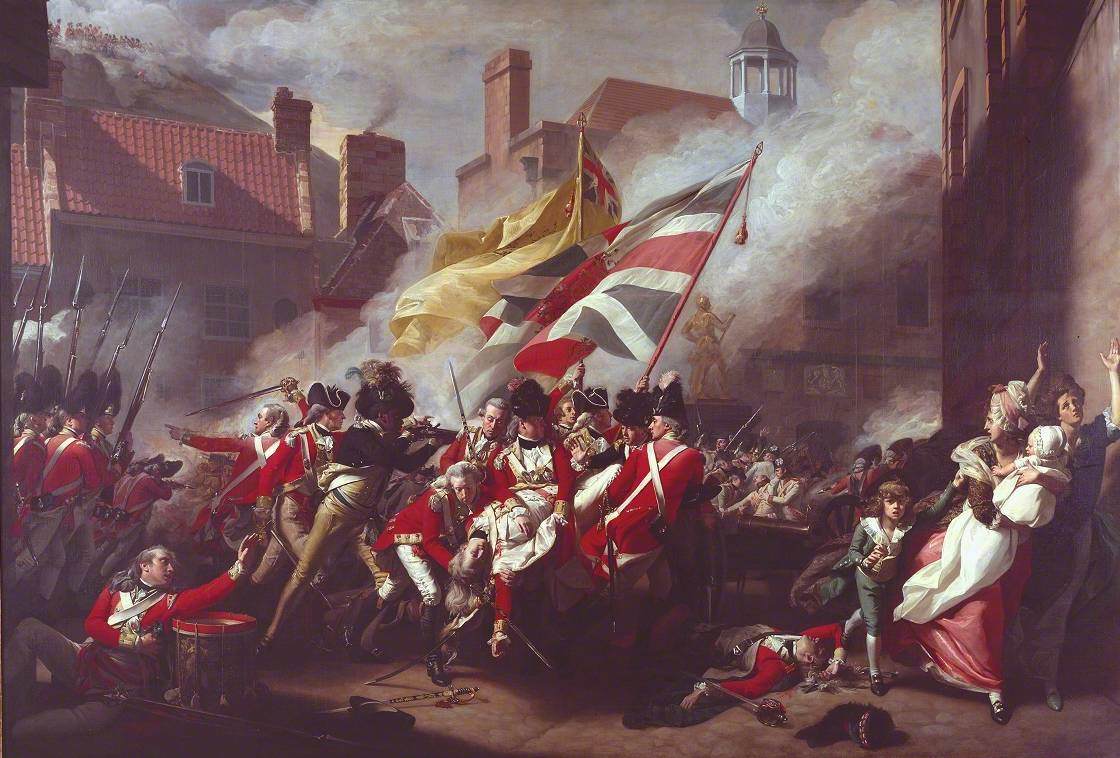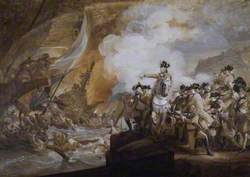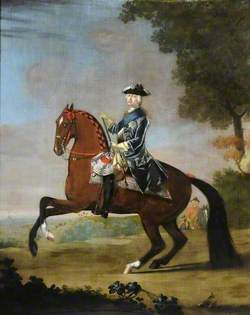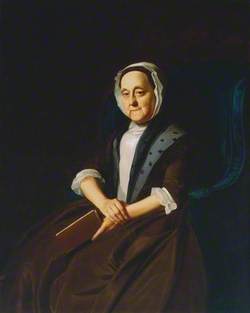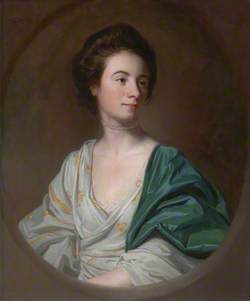How you can use this image
This image is available to be shared and re-used under the terms of the Creative Commons Attribution-NonCommercial-NoDerivatives licence (CC BY-NC-ND).
You can reproduce this image for non-commercial purposes and you are not able to change or modify it in any way.
Wherever you reproduce the image you must attribute the original creators (acknowledge the original artist(s) and the person/organisation that took the photograph of the work) and any other rights holders.
Review our guidance pages which explain how you can reuse images, how to credit an image and how to find more images in the public domain or with a Creative Commons licence available.
DownloadNotes
Add or edit a note on this artwork that only you can see. You can find notes again by going to the ‘Notes’ section of your account.
This picture celebrates the British defence of Jersey against French invasion in 1781 and also pays tribute to a young Major, Francis Peirson, who lost his life in the process. Originally a part of France, the island of Jersey had been in the possession of the English since 1066. On the night of 5–6 January 1781 a small army of French soldiers landed on the island and marched on the capital, St Helier. They captured the Governor, Moses Corbet, and forced him to sign a document of surrender. However, the British garrison and the Jersey militia launched a counter-attack, led by Major Peirson, during the course of which Peirson was killed by a French sniper. Almost immediately, Peirson's black servant, Pompey, turned on the sniper and shot him dead. A battle ensued in Royal Square and the French were defeated.
Many of the officers in the painting are said to be accurate portraits and Pompey was modelled by the black servant of the auctioneer James Christie. The setting for the picture is also carefully depicted, looking towards Royal Square along what is now Peirson Place, with the statue of George II in the background. When the picture was first exhibited publicly in May 1784, crowds of people came to see it and, according to one critic, 'the chorus of praise reached all the way to Buckingham Palace' (quoted in Wilson, p.35).
Further reading: Jules David Prown, 'J. S. Copley – In England 1774–1815', Cambridge, Massachusetts, 1966, pp.302–310, reproduced no.442. Richard Saunders, 'Genius and Glory – J. S. Copley's The Death of Major Peirson', The American Art Journal, vol. 22, no.3, 1990. Simon Wilson, 'Tate Gallery: An Illustrated Companion', Tate Gallery, London 1990, p.35, reproduced p.35, in colour. Frances Fowle December 2000
Title
The Death of Major Peirson, 6 January 1781
Date
1783
Medium
Oil on canvas
Measurements
H 251.5 x W 365.8 cm
Accession number
N00733
Acquisition method
Purchased 1864
Work type
Painting
